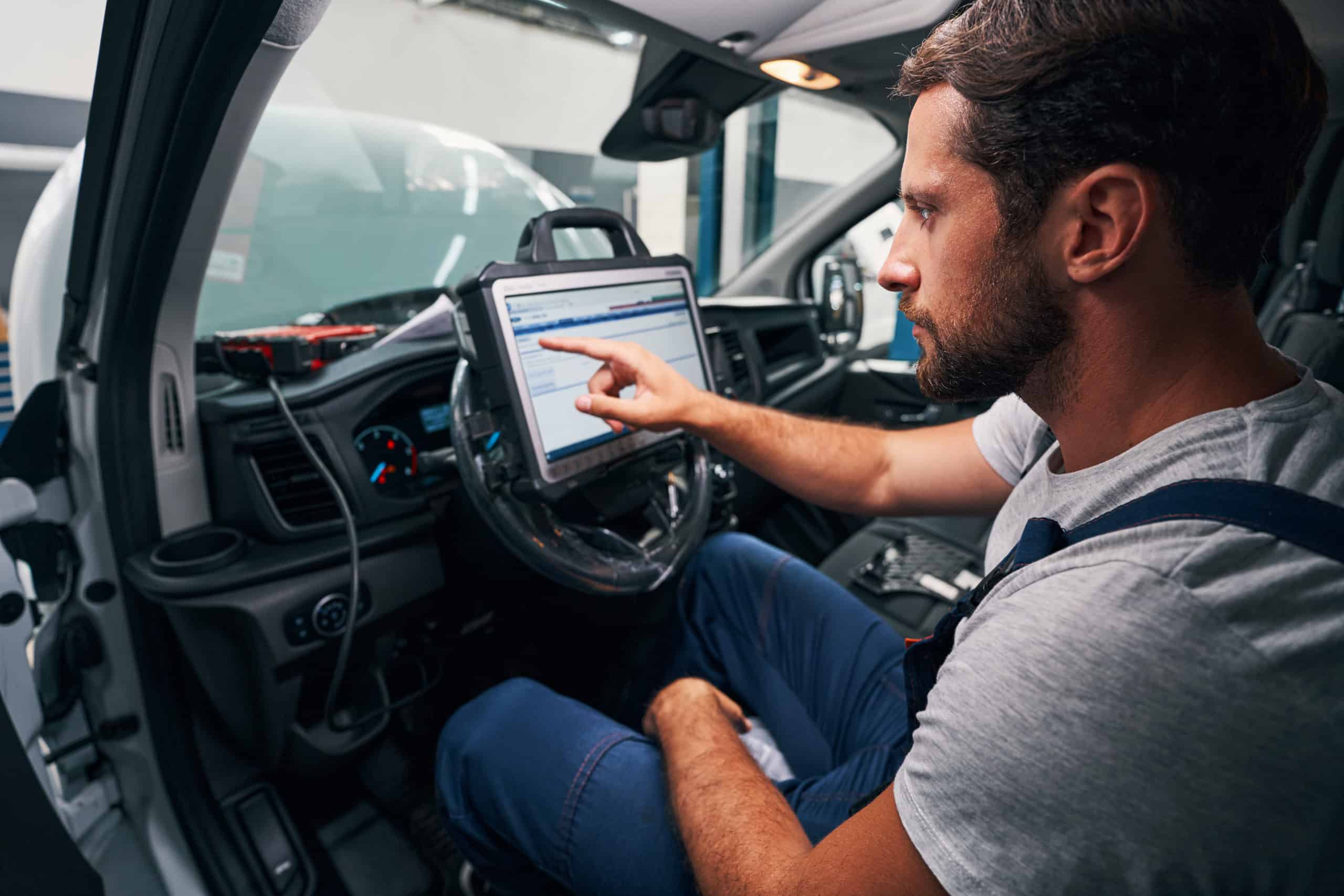Route Optimisation Software Integration: Seamlessly Connecting with Your Existing Systems
For any modern business, connecting their internal systems is no longer a ‘nice to have’, but an essential.
And the same can be said for route optimisation solutions. The integration of these systems into wider business solutions brings many benefits and allows businesses to run a smoother operation, whilst future-proofing themselves.
In this blog post, we will explore the importance of integrating business systems, such as route optimisation, the benefits it brings to businesses, the challenges integration helps overcome, and some specific use cases for integrations.
Why is it important to integrate your business systems?
Today, many businesses are highly reliant on internal systems for their day-to-day running. Many of which hold different data, boast different capabilities, and are accessed by different users.
For these systems to work as effectively as possible, they need to speak to one another, or in technical terms, ‘integrate’.
By integrating your business systems, data can be shared to help improve accuracy and access throughout the business. This also means that shared data can benefit multiple systems, automating processes based on the information stored.
The benefits of integrating your route optimisation solution with your other systems
Specifically, integrating your route optimisation solution can bring many benefits to your business, and the other systems used.
Seamless efficiency
Integrating route optimisation software with other business systems such as CRM or ERP can dramatically enhance operational efficiency.
These integrations facilitate seamless communication between different departments, ensuring that everyone has access to the same up-to-date information.
For instance, customer addresses and preferences from the CRM automatically update delivery routes in real-time, preventing the need for manual entry and reducing the likelihood of errors. Additionally, integration with ERP systems allows a seamless creation of orders in route optimisation solutions, from as early as the point of sale.
Cost reduction
By automating data transfers between systems, businesses can significantly reduce the time and labour traditionally required for manual data entry and analysis. This not only cuts down on labour costs but also minimises the risk of human error, potentially saving businesses substantial amounts in avoidable mistakes.
Enhanced customer service
When route optimisation software is integrated with CRM systems, the benefits extend directly to customer service.
Delivery schedules can be adjusted in real-time based on customer availability, ensuring that deliveries are made at the most convenient times, thereby improving customer satisfaction and loyalty.
There is also the significant benefit of real-time visibility of delivery schedules, ETA’s, and POD in one system. By integrating customer contact data with route optimisation solutions, businesses can send real-time updates about delivery statuses via email and SMS.
Data-driven decision making
The holistic view provided by integrated systems allows businesses to make informed decisions, quickly.
Vehicle types and orders with specific requirements can be scheduled smartly in route optimisation solutions according to their requirements. e.g. frozen, crane, two men required.
And of course, businesses can pull data regarding their deliveries to analyse and provide insights into utilisation and delivery efficiency to further streamline their operations.
Challenges of not integrating your systems
There are lots of benefits to integrating your route optimisation solution with your other business systems, but if you fail to do so, what could the consequences be?
Data silos
One of the most significant challenges posed by non-integrated systems is the creation of data silos.
When data is trapped in isolated systems, it becomes difficult to achieve a comprehensive view of business operations. This fragmentation can lead to inefficiencies, as teams may not have access to the information they need to make informed decisions or may even duplicate work.
Increased operational costs
Operating multiple standalone systems can lead to significant increases in costs.
Each system may require separate maintenance, support, and training, which can quickly add up. Moreover, the inefficiencies resulting from a lack of integration, such as redundant data entry and the consequent errors, often lead to increased labour costs and wastage.
Poor customer experience
Without integrated systems, the customer experience can suffer significantly.
For example, if route optimisation software does not integrate with CRM systems, delivery times might not align with customer availability or preferences, leading to missed deliveries and unhappy customers.
Furthermore, the lack of real-time data flow can hinder the ability to respond promptly to customer inquiries and issues, further degrading the customer service quality.
How route optimisation software improves CRM systems
Integrating route optimisation software with CRM systems can transform customer management by aligning logistical operations with customer needs. This integration enables personalised service delivery, which is crucial for building customer loyalty and satisfaction.
Personalised delivery schedules
With integrated CRM data, route optimisation software can tailor delivery schedules to individual customer preferences, which is crucial for companies offering time-sensitive or subscription-based services. This personalisation ensures that deliveries are not just efficient but also customer-centric.
Proactive service adjustments
The combined data from CRM and route optimisation systems allow businesses to proactively manage deliveries.
For example, if a customer frequently changes delivery times or locations, these systems can dynamically adjust to meet changing preferences without manual intervention.
How route optimisation software improves ERP systems
The integration of route optimisation software with ERP systems streamlines multiple aspects of the supply chain, from inventory management to accounting, providing a seamless flow of information across business functions.
Inventory and delivery coordination
By integrating with ERP systems, route optimisation software can ensure that delivery schedules are closely coordinated with inventory levels. This prevents scenarios where goods are either out of stock or excessively overstocked, thereby optimising both delivery performance and inventory management.
Accurate financial forecasting
ERP integration provides accurate data for financial planning. Delivery costs, times, and efficiencies are all recorded and analysed to help forecast future financial needs more accurately.
This can aid in more accurate budgeting and financial planning, essential for maintaining the profitability and operational efficiency of the business.
How route optimisation software improves telematics systems
The integration of telematics with route optimisation software provides a wealth of real-time data that enhances logistical operations and decision-making.
Enhanced real-time tracking
Telematics devices provide live data on vehicle locations and conditions, which can be fed into route optimisation software to adjust routes on the fly. This not only improves delivery efficiency but also enhances the safety of the fleet by monitoring vehicle health and driver behaviour.
Compliance and safety
Integrating telematics data helps ensure compliance with driving regulations and safety standards. Route optimisation software can schedule deliveries in a way that complies with driving hours regulations and maintains safety standards, reducing the risk of accidents and legal issues.
The benefits of an open API in software integration
Route optimisation systems which offer an open REST API allow access to resources (data entities) via URL paths.
In more basic terms, this means that a route optimisation system can be easily integrated with any telematics, ePOD, SOP, ERP, WMS, and CRM solution. Even if the integration doesn’t come ‘out of the box’.
This makes the automatic transfer of data between business systems very easy to set up and manage. And takes away the headache of manual data file imports, speeds up processing time, and means you get great results, fast.
Future-proofing your business with integrated systems
In a world where efficiency and customer satisfaction are paramount, integrating route optimisation software with CRM, ERP, telematics, and other relevant systems isn’t just an operational upgrade, it’s a strategic necessity.
By ensuring seamless communication between these systems, businesses can enhance their operational capabilities, reduce costs, and deliver superior customer service. This integration allows businesses to leverage the full potential of their technological investments, transforming isolated operations into a unified, efficient process.
By embracing integrated solutions like those offered by MaxOptra, businesses are not only optimising their current operations but are also setting the stage for sustained success and competitiveness in the digital age.
Get in touch with our team of experts to find out more.
Maxoptra System
© MaxOptra, 2023. Privacy Policy and Cookies






